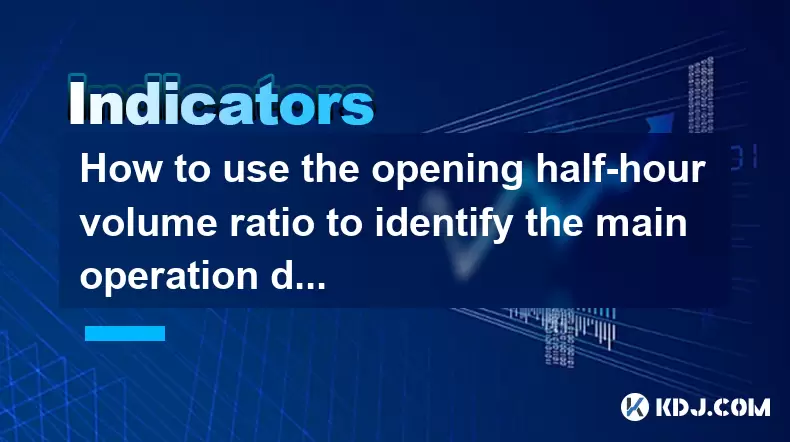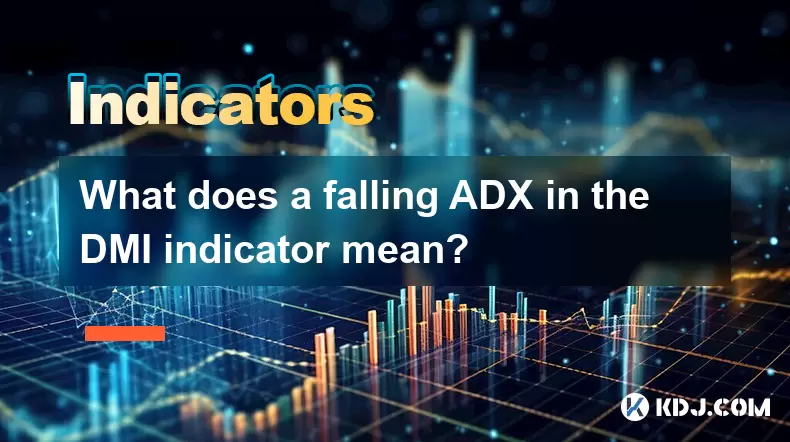-
 Bitcoin
Bitcoin $116700
0.24% -
 Ethereum
Ethereum $3973
4.34% -
 XRP
XRP $3.283
7.68% -
 Tether USDt
Tether USDt $1.000
0.01% -
 BNB
BNB $789.8
2.27% -
 Solana
Solana $176.2
3.31% -
 USDC
USDC $0.9999
0.00% -
 Dogecoin
Dogecoin $0.2238
5.14% -
 TRON
TRON $0.3389
-0.51% -
 Cardano
Cardano $0.7907
4.03% -
 Stellar
Stellar $0.4527
10.02% -
 Hyperliquid
Hyperliquid $41.07
4.27% -
 Sui
Sui $3.794
1.77% -
 Chainlink
Chainlink $19.49
10.40% -
 Bitcoin Cash
Bitcoin Cash $580.9
0.74% -
 Hedera
Hedera $0.2617
4.32% -
 Avalanche
Avalanche $23.41
3.67% -
 Ethena USDe
Ethena USDe $1.001
-0.03% -
 Litecoin
Litecoin $122.4
1.38% -
 Toncoin
Toncoin $3.364
1.49% -
 UNUS SED LEO
UNUS SED LEO $8.988
0.37% -
 Shiba Inu
Shiba Inu $0.00001295
2.82% -
 Uniswap
Uniswap $10.62
5.75% -
 Polkadot
Polkadot $3.922
4.46% -
 Dai
Dai $1.000
0.01% -
 Bitget Token
Bitget Token $4.494
2.15% -
 Monero
Monero $268.0
-1.30% -
 Cronos
Cronos $0.1523
3.68% -
 Pepe
Pepe $0.00001127
4.43% -
 Aave
Aave $285.4
4.85%
How to use the opening half-hour volume ratio to identify the main operation direction of the day?
The opening half-hour volume ratio helps crypto traders gauge market sentiment and predict daily trends by comparing initial trading volume to a monthly average.
Jun 01, 2025 at 05:35 pm

Understanding the opening half-hour volume ratio is crucial for traders in the cryptocurrency market as it can provide insights into the main operational direction for the day. The opening half-hour volume ratio is a metric that compares the trading volume during the first 30 minutes of the trading day to the average volume of the same period over a recent period, typically the past month. This ratio can help traders gauge the strength and direction of market sentiment at the start of the trading day.
What is the Opening Half-Hour Volume Ratio?
The opening half-hour volume ratio is calculated by dividing the volume of trades executed in the first 30 minutes of the trading day by the average volume of trades during the same time period over the past month. For example, if the volume during the opening half-hour on a particular day is 10,000 BTC and the average volume for the past month during the same time frame is 8,000 BTC, the ratio would be 10,000 / 8,000 = 1.25. A ratio above 1 indicates higher than average volume, suggesting increased interest and potentially stronger market movements.
How to Calculate the Opening Half-Hour Volume Ratio
To calculate the opening half-hour volume ratio, follow these steps:
- Identify the volume for the first 30 minutes of the current trading day. This data can be obtained from trading platforms or market data providers.
- Calculate the average volume for the first 30 minutes of the trading day over the past month. This involves summing the volumes for the first 30 minutes of each trading day in the past month and then dividing by the number of trading days.
- Divide the current day's volume by the average volume to get the ratio.
Interpreting the Opening Half-Hour Volume Ratio
A high opening half-hour volume ratio (greater than 1) suggests that there is significant interest in the market, which could indicate a strong directional move. If the price is also moving significantly in one direction during this period, it may signal that the market is poised to continue in that direction for the rest of the day. Conversely, a low opening half-hour volume ratio (less than 1) may indicate a lack of interest or a potential for a less volatile trading day.
Using the Opening Half-Hour Volume Ratio to Identify Main Operation Direction
To use the opening half-hour volume ratio to identify the main operation direction of the day, traders should consider the following steps:
- Monitor the opening price movement alongside the volume ratio. If the price moves upwards with a high volume ratio, it suggests bullish sentiment and potential for a continued upward trend.
- Observe the price action after the first 30 minutes. If the price continues to move in the same direction as during the opening half-hour, it reinforces the initial directional signal.
- Combine with other indicators. Use technical indicators like moving averages, RSI, or MACD to confirm the direction suggested by the volume ratio.
Practical Example of Using the Opening Half-Hour Volume Ratio
Let's consider a practical example to illustrate how to use the opening half-hour volume ratio. Suppose on a particular trading day, the volume during the first 30 minutes is 12,000 BTC, and the average volume for the past month during the same period is 9,000 BTC. The opening half-hour volume ratio would be 12,000 / 9,000 = 1.33. If the price also increased by 2% during this period, it suggests strong bullish sentiment.
- Check the price movement after the first 30 minutes. If the price continues to rise, it supports the bullish signal indicated by the high volume ratio.
- Use additional indicators to confirm the trend. For instance, if the RSI is above 50 and moving averages are sloping upwards, it further validates the bullish trend suggested by the opening half-hour volume ratio.
Limitations and Considerations
While the opening half-hour volume ratio can be a valuable tool, it is important to consider its limitations. The ratio alone does not provide a complete picture and should be used in conjunction with other analysis methods. Market conditions can change rapidly, and other factors such as news events or economic reports can influence market movements. Therefore, it is essential to remain flexible and adapt to changing market dynamics.
FAQs
Q: Can the opening half-hour volume ratio be used for all cryptocurrencies?
A: Yes, the opening half-hour volume ratio can be applied to any cryptocurrency that has sufficient trading volume and data available. However, the effectiveness may vary depending on the liquidity and market dynamics of each cryptocurrency.
Q: How frequently should the opening half-hour volume ratio be recalculated?
A: The opening half-hour volume ratio should be recalculated daily to reflect the most current market conditions. Additionally, traders may choose to update the average volume used in the calculation on a weekly or monthly basis to ensure the data remains relevant.
Q: Are there any tools or platforms that automatically calculate the opening half-hour volume ratio?
A: Some advanced trading platforms and analytical tools may offer features to calculate the opening half-hour volume ratio automatically. Traders should check their preferred platforms or consider third-party tools that provide such functionality.
Q: How does the opening half-hour volume ratio compare to other volume-based indicators?
A: The opening half-hour volume ratio focuses specifically on the volume during the first 30 minutes of trading, making it unique in its ability to gauge early market sentiment. Other volume-based indicators like the volume-weighted average price (VWAP) or on-balance volume (OBV) provide different insights into market trends and should be used complementarily to gain a more comprehensive understanding of market dynamics.
Disclaimer:info@kdj.com
The information provided is not trading advice. kdj.com does not assume any responsibility for any investments made based on the information provided in this article. Cryptocurrencies are highly volatile and it is highly recommended that you invest with caution after thorough research!
If you believe that the content used on this website infringes your copyright, please contact us immediately (info@kdj.com) and we will delete it promptly.
- Token Buybacks, Onchain Data, and Developers: What's Buzzing in Crypto
- 2025-08-09 05:10:15
- Coinbase at Oppenheimer Conference: A Glimpse into the Future of Crypto Trading
- 2025-08-09 04:50:14
- Pepe Price Prediction: Can the Meme Coin Maintain Its Momentum?
- 2025-08-09 05:15:24
- Bitcoin, Ethereum, XRP in 2032: Crystal Ball Gazing or Calculated Prediction?
- 2025-08-09 04:30:14
- Bitcoin, Ethereum, and Support Levels: Navigating the Crypto Landscape
- 2025-08-09 04:30:14
- Roman Storm, Funding Effort, and the Looming Defense Retrial: A New York Minute on the Tornado Cash Case
- 2025-08-09 02:50:14
Related knowledge

What does it mean when the TRIX indicator suddenly diverges downward after a long period of convergence?
Aug 09,2025 at 12:56am
Understanding the TRIX Indicator in Cryptocurrency TradingThe TRIX indicator, or Triple Exponential Average, is a momentum oscillator used in technica...

Why is the rise limited after a MACD bottoming divergence?
Aug 09,2025 at 12:07am
Understanding MACD Bottoming Divergence in Cryptocurrency TradingThe MACD (Moving Average Convergence Divergence) is a widely used technical indicator...

What does it mean when the OBV continues to rise but the price is trading sideways?
Aug 08,2025 at 10:35pm
Understanding On-Balance Volume (OBV)On-Balance Volume (OBV) is a technical indicator that uses volume flow to predict changes in stock or cryptocurre...

What does a falling ADX in the DMI indicator mean?
Aug 09,2025 at 03:16am
Understanding the ADX and DMI Indicator FrameworkThe DMI (Directional Movement Index) is a technical analysis tool developed by J. Welles Wilder to id...

What does a double top pattern on the Williams oscillator mean?
Aug 09,2025 at 02:36am
Understanding the Williams %R OscillatorThe Williams %R oscillator is a momentum indicator developed by Larry Williams to identify overbought and over...

What is a nonce and how is it used in Proof of Work?
Aug 04,2025 at 11:50pm
Understanding the Concept of a Nonce in CryptographyA nonce is a number used only once in cryptographic communication. The term 'nonce' is derived fro...

What does it mean when the TRIX indicator suddenly diverges downward after a long period of convergence?
Aug 09,2025 at 12:56am
Understanding the TRIX Indicator in Cryptocurrency TradingThe TRIX indicator, or Triple Exponential Average, is a momentum oscillator used in technica...

Why is the rise limited after a MACD bottoming divergence?
Aug 09,2025 at 12:07am
Understanding MACD Bottoming Divergence in Cryptocurrency TradingThe MACD (Moving Average Convergence Divergence) is a widely used technical indicator...

What does it mean when the OBV continues to rise but the price is trading sideways?
Aug 08,2025 at 10:35pm
Understanding On-Balance Volume (OBV)On-Balance Volume (OBV) is a technical indicator that uses volume flow to predict changes in stock or cryptocurre...

What does a falling ADX in the DMI indicator mean?
Aug 09,2025 at 03:16am
Understanding the ADX and DMI Indicator FrameworkThe DMI (Directional Movement Index) is a technical analysis tool developed by J. Welles Wilder to id...

What does a double top pattern on the Williams oscillator mean?
Aug 09,2025 at 02:36am
Understanding the Williams %R OscillatorThe Williams %R oscillator is a momentum indicator developed by Larry Williams to identify overbought and over...

What is a nonce and how is it used in Proof of Work?
Aug 04,2025 at 11:50pm
Understanding the Concept of a Nonce in CryptographyA nonce is a number used only once in cryptographic communication. The term 'nonce' is derived fro...
See all articles

























































































